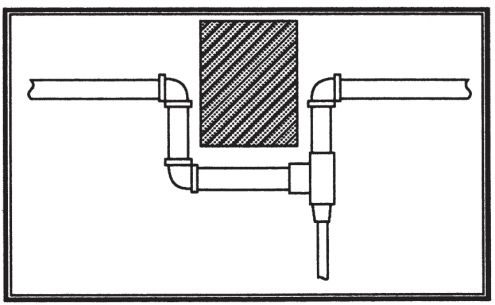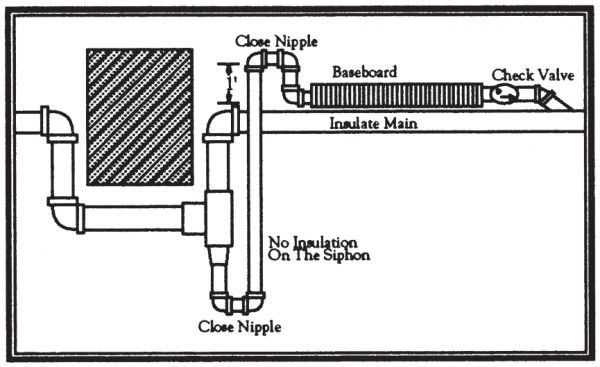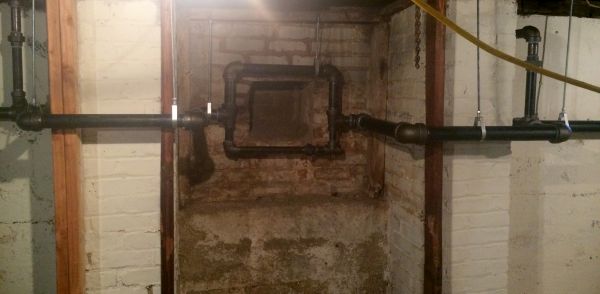This all-technical, three-hour seminar will make you familiar with the many types of old steam heating systems and what goes wrong with them. Dan Holohan’s easy-to-follow...
Piping Past Obstructions in One-Pipe Steam Heating Systems
Here’s how you’d pass a steam main over a steel beam:

The pitch is in the direction of the flow. The steam goes over the beam through a pipe that’s the same size as the main. The condensate goes under the beam through a pipe which you’d size the same as a wet return (see chart for wet-return sizing).
Make sure the centerline of the main on the downhill side of the beam is at least 1 inch lower than the centerline of the main on the uphill side. That’s so condensate will drain out of the lower pipe without backing up into the uphill steam main.
If you can’t get over the beam, you might go through it. If that’s not possible, just go under it by dropping the entire main.
If you can’t do that and have to bring the main up again, try this:

Drip the main into a wet return if one is available. That’s always best. But if you don’t have a wet return nearby, you can get a little creative and do this:

This is a steam siphon. Make sure you don’t insulate the ¾-inch siphon piping (but make sure the main is insulated). Condensate will flow downhill and fill the water seal at the bottom of the siphon. Steam pressure in the main will push down on the water seal and drive the condensate up the pipe. Some steam will also go up the siphon pipe.
Since you don’t insulate the siphon piping, the steam above the water seal will condense faster than the steam in the main. The short length of fintube radiation above the main (between the inverted loop and the check valve) speeds up the condensing process. That drops the pressure above the water seal in the siphon and draws condensate up the pipe. The check valve holds the siphon while it’s forming.
The siphon usually forms and breaks several times before it’s established, but once it is established, it works just like a hose draining a swimming pool. The siphon draws the condensate up over the hump, through the swing-check valve, and dumps it back into the steam main. Make sure you have about a foot of height above the check valve. You’ll need this to build some static pressure. The combined static pressure and steam pressure will be enough to open the check against the downstream steam pressure. Enter the main from the siphon on a 45-degree angle, as you would in a one-pipe system.
The main drawback of the siphon is that it only works when the steam pressure is up. And you do need more steam pressure than usual to make it work.
And here's another example of piping around obstructions. This work was done by steam-heating experts Danny Scully and Ezzy Travis.

Leave a comment
Related Posts
We always have turkey for Thanksgiving. I mean who doesn’t? My job wasn’t to cook it, though; it was to eat it.
I had written a story for Plumbing & Mechanical a while back about a fella in Canada who sent me this email: "Our problem is that five out of hundreds of univentilator co...